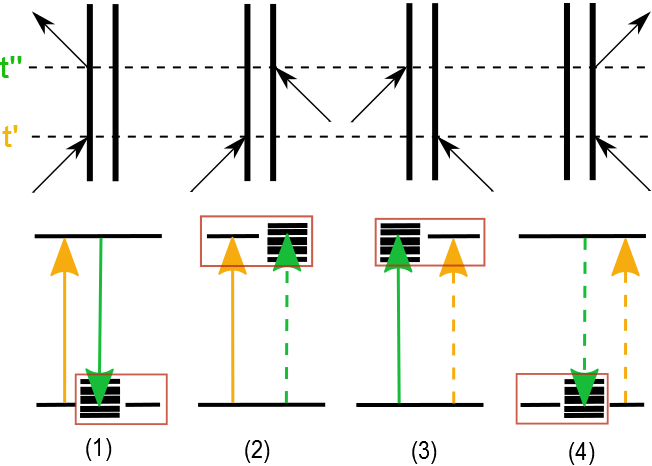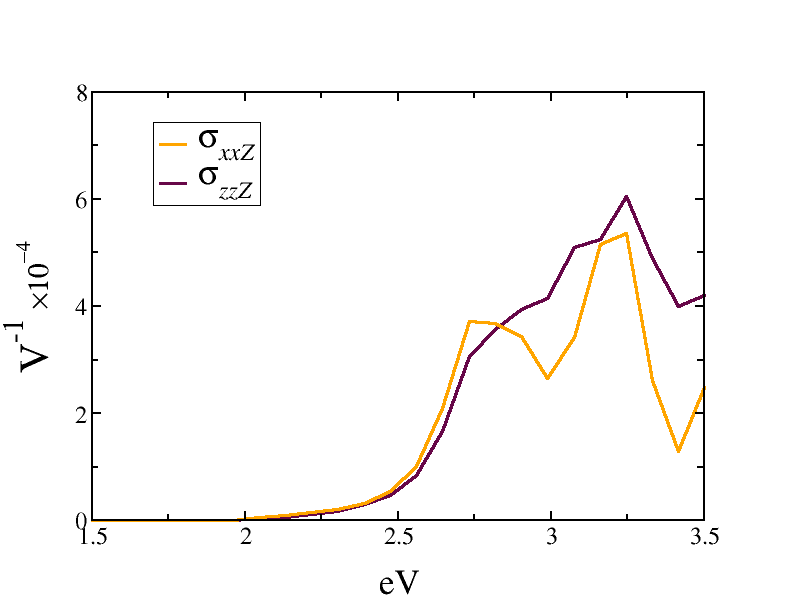Bulk Photovoltaic Effect
Bulk Photovoltaic Effect (BPVE) in noncentrosymmetric materials is completely different from "p-n junction" solar cell mechanism. Shift current is an interesting model to describe BPVE. This is a second order process with electron wavefunctioins excited twice by the light. Based on perturbation theory, it is possible to use first-principle method to calculate the transition intensity and shift vector in order to obtain short-circuit current. |
 |
Recent related works
 |
Shift current theory displays quite good agreement with the experiments in BaTiO3. It successfully predicted magnitude, sign and whole spectral profile of BaTiO3, including the notable dependence of current direction on the polarization. |
 |
BiFeO3 is a widely studied material with both ferromagnetic and ferroelectric properties in room temperature. We can use first-principle method to calculate all the tensor elements of its shift current response. |
 |
Pure spin current means that "up" spin and "down" spin move in opposite directions with same magnitude and the total charge current will be zero. Bulk Photovoltaic pure spin current in antiferromagnetics originates from mirror symmetry of two sublattices with different spins. Without strongly spin-orbital coupling or circular light, it can generate pure spin current. |
Related publications
|
|
|
|
|
|
